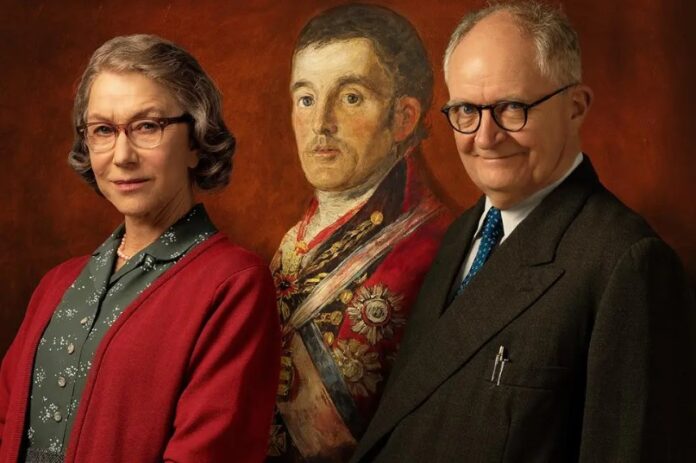As the story goes, in 1969, Kempton Bunton, a 61-year-old taxi driver, snuck into the National Gallery in London and removed Francisco de Goya’s portrait The Duke of Wellington (1814), before creeping away into the night. The theft became national news and Britain mobilized to hunt down the thief, who was assumed to be an expert, criminal mastermind.
Bunton evaded the police for some four years, and could have likely gone for longer, as he ended up turning himself in to the authorities and returning the missing Goya. But in The Duke, a dramatic retelling of the tale that had its U.S. wide release on April 22, we learn that the middle-aged cabby wasn’t the actual crook who absconded with a masterpiece; it was his son, John. That revelation first became public in 2012.
Directed by the late Roger Michell (of Notting Hill fame), the film dives into the previously unknown history of the theft, which tells the story from the family’s point of view. Bunton’s grandson Christopher approached Nicky Bentham, founder of Neon Films, the film’s production company, offering this approach a few years ago.
The background is that Kempton Bunton (Jim Broadbent) and his wife Dorothy (Helen Mirren) are in a bad way, financially at least. A disabled war veteran who was semi-retired, Bunton often had trouble making ends meet, though that was due, in part, to his eccentric and moral personality, to the eternal chagrin of his wife.
Bunton’s interest in Goya’s Duke of Wellington stems from his activism—kind of. One of his crusades was over whether or not senior citizens should be required to pay for British television licenses. He was arrested several times for refusing to pay the license in protest. When Bunton learns that the U.K. government spent £140,000 to keep The Duke of Wellington in the country in 1961, after the work was auctioned off by Sotheby’s and almost sold to major American collector Charles Wrightsman. (A foundation and the government were able to cobble together the needed £140,000 to match Wrightsman’s winning bid and secure its stay.) The steep price tag disgusted Bunton.
“It’s the taxpayers like you and me that’s paying for that painting,” Bunton says early on in the film. Dorothy quickly quips, “Since when have you paid any tax?” Bunton ignores the question and steams ahead, “Spending our hard-earned money on a half-baked portrait by some Spanish drunk of a duke who was a bastard to his men and voted against universal suffrage!”
Thus the ground is set for a theft motivated by a strong sense of injustice, yet in the end it’s Jackie who stole the painting. (No explanation is given as to why Bunton’s son’s name has been changed from John to Jackie for the film.) The way the movie portrays it, Jackie, inspired by his father’s sense of injustice somewhat impulsively snuck into the museum at night while security sensors were shut down to allow for a janitor to make his rounds, and nabbed the painting. In the film, he soon confesses his crime to his father, who immediately insists on concocting a story that he was behind the heist, should the authorities ever find out.
The Duke boils down to a loving portrait of a family, a far cry from the Ocean’s Eleven–type heist film that many moviegoers might expect based on the film’s premise. The Buntons are affectionate and humorous with one another, and father and son do what they can to shield Dorothy from the truth: that hidden inside their cabinet closet is a priceless work of art that threatens to destroy the entire family. But eventually Dorothy does find out, and Bunton turns in the painting—and himself. But after rousing and unexpected court proceedings, Bunton gets off without any jail time.
There are, however, certain aspects of The Duke that leave much to be desired. In particular, the film’s effort to shine some light on Dorothy’s life falls flat. Dorothy is a sensical woman who must beg her husband to focus on his family’s needs. In order to spend more time with Dorothy, she is given a confidante in a well-to-do woman whose house Dorothy cleans. Her employer, who attentively listening to Dorothy, goes out of her way to offer support, whether by signing Kempton’s petition for TV licenses for pensioners or showing up at his trial. This cross-class alliance, though possible, inevitably rings a bit hollow.
In the end, however, The Duke is a sweet film that gives an inside look into this family’s unusual, true story.

























